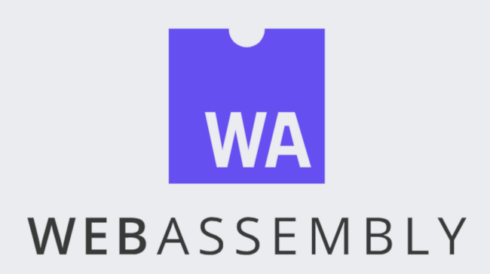Node.js is a extremely common runtime surroundings for server-side programs, boasting a flexible ecosystem of equipment and libraries.
To maximise its doable, simplify construction, and spice up productiveness, builders steadily flip to Built-in Building Environments (IDEs).
On this article, we’ll discover the concept that of Node.js IDEs and provide the highest 15 choices for creating trendy programs. Whether or not you’re a newbie or a mature Node.js developer, there’s an IDE in this checklist that help you write blank, environment friendly, and maintainable code.
What Is Node.js?
Node.js is an open-source, cross-platform runtime surroundings that permits builders to run JavaScript code at the server aspect. It’s constructed at the V8 JavaScript engine, famend for its pace and effectiveness.
What units Node.js aside is its non-blocking, event-driven structure that makes it specifically just right for development real-time programs, APIs, and microservices.
What Is an IDE?
An Built-in Building Surroundings (IDE) is a instrument resolution that gives a holistic surroundings for instrument construction.
It combines quite a lot of equipment, options, and functions right into a unmarried built-in platform to advertise the writing, checking out, and debugging of code.
IDEs are designed to optimize and enhance the advance procedure, making it extra streamlined and productive for builders.
15 Highest IDEs For Node.js App Building
Let’s discover 15 highest IDEs that help you optimize your Node.js application development procedure:
Microsoft Visible Studio Code (VS Code)

Microsoft Visible Studio Code (VS Code) stands tall amongst Node.js IDEs. It’s a extremely common and flexible code editor that gives remarkable Node.js reinforce via an unlimited array of extensions.
VS Code provides a feature-rich surroundings, together with complex debugging functions, clever code of entirety, and an expansive extension market.
Its user-friendly interface, coupled with extensibility, positions it as a best choice for Node.js builders world wide.
WebStorm
WebStorm, advanced via JetBrains, is a industrial IDE explicitly designed for internet construction.
It provides complex JavaScript and Node.js coding help. Additionally, its clever code of entirety and strong debugging equipment make it an excellent choice amongst skilled builders.
WebStorm’s key receive advantages lies in its skill to test your code and supply real-time suggestions for bettering its high quality. It additionally helps quite a lot of Node.js construct equipment, which makes it a very good choice for advanced Node.js tasks.
Vim
Vim is a vintage text-based code editor recognized for its efficiency and pace. Whilst it has a steep studying curve, Node.js builders who grasp Vim can revel in a productive coding revel in.
Vim’s power lies in its keyboard-centric way, which permits builders to briefly navigate and edit code. With the fitting plugins, Vim may give very good Node.js reinforce, together with syntax highlighting and auto-completion.
Notepad++
Notepad++ is a light-weight, open-source textual content editor for Home windows. Whilst now not as feature-rich as every other IDEs in this checklist, it’s easy to make use of and helps Node.js construction with syntax highlighting and a plugin machine.
Notepad++ is a wonderful selection for builders in search of a simple and rapid textual content editor with elementary Node.js reinforce. It’s really helpful for speedy edits and scripting duties.
JetBrains Rider
JetBrains Rider is a cross-platform, full-featured IDE that helps more than one languages, together with JavaScript and Node.js. It supplies in depth code research, debugging, and clever code of entirety options.
JetBrains Rider sticks out with its deep integration of quite a lot of construction equipment and complete reinforce for Node.js. It’s well-suited for builders operating on multi-language tasks that come with Node.js elements.
Atom
Atom, a code editor advanced via GitHub and to be had as open-source, is well known for its flexibility and robust group reinforce.

By means of in moderation opting for and including plugins, Atom can also be reworked into an efficient Node.js construction surroundings.
Atom comes with a various set of options, reminiscent of autocomplete, integrated Git reinforce, and an intensive selection of extensions, which makes it a competent choice for Node.js builders.
Chic Textual content
Chic Textual content is a light-weight but powerful code editor preferred for its pace and responsiveness. Whilst it doesn’t are compatible the standard IDE mould, Chic Textual content can also be prolonged with Node.js-specific plugins to enhance your construction revel in.
Chic Textual content’s simplicity and function make it a beautiful choice for Node.js builders who prioritize options like more than one alternatives, break up enhancing, and a distraction-free mode.
Eclipse
Eclipse is a well-established IDE essentially related to Java construction. Nonetheless, it may be tailored for Node.js construction in the course of the set up of related plugins.
Eclipse’s power lies in its extensibility and the wide vary of plugins to be had for various programming languages and frameworks.
Node.js builders can use the Nodeclipse plugin to get admission to crucial Node.js construction options inside of Eclipse’s acquainted surroundings.
Brackets
Brackets represents an open-source textual content editor created via Adobe particularly to concentrate on internet construction.
Brackets excels at front-end construction duties and provides a user-friendly interface for operating on internet tasks. Whilst it’s essentially designed for internet design, it may be prolonged to reinforce Node.js construction via to be had extensions.
NetBeans with NBNodeJS
NetBeans is a unfastened and open-source IDE that provides reinforce for Node.js construction in the course of the NBNodeJS plugin. This plugin supplies options reminiscent of code of entirety, debugging, and venture control adapted to Node.js tasks.

Code::Blocks with Node.js Plugin
Code::Blocks is a unfastened, open-source, and extremely extensible IDE with a powerful emphasis on C/C++ construction. Then again, Node.js builders can prolong its capability with the Node.js plugin to revel in a extra Node.js-centric coding revel in.
Cloud9 IDE
Cloud9, now part of Amazon Internet Products and services (AWS), sticks out as a flexible and strong cloud-based IDE that caters to quite a lot of internet construction wishes.
It’s designed for groups and builders preferring operating within the cloud. It simplifies the setup procedure for Node.js construction environments and promotes collaboration via options like real-time enhancing and chat.
Emacs with js2-Mode
Emacs is a perfect customizable and flexible textual content editor. With the js2-mode plugin, Emacs turns into a gifted surroundings for Node.js construction.
Emacs is famend for its flexibility and the facility to customise it to compare your workflow. With the js2-mode, it may give ok reinforce for Node.js construction, together with syntax highlighting and code navigation.
IntelliJ IDEA with Node.js Plugin
IntelliJ IDEA is a famend IDE for Java construction, however its tough code research and refactoring equipment make nice tools for Node.js tasks.
IntelliJ IDEA provides a clean construction revel in and is understood for its code inspection and refactoring functions.
The Node.js plugin extends its capability to incorporate Node.js-specific options, making it appropriate for builders operating on hybrid tasks.
Koding
Koding is a cloud-based construction surroundings with integrated reinforce for Node.js. It simplifies putting in Node.js construction environments and provides collaborative options.
Koding is designed for simplicity and collaboration, which makes it a forged selection for groups operating on Node.js tasks.
It gets rid of the desire for native construction setups and offers a centralized platform for coding and collaboration.
Conclusion
Selecting the proper IDE for Node.js construction depends upon your personal tastes, particular venture wishes, and price range constraints.
Nonetheless, it doesn’t matter what you prioritize — options, simplicity, collaboration, or customizability — in this checklist, you’ll discover a appropriate IDE to successfully expand trendy programs with Node.js.
Take a look at one or experiment with a couple of of them to resolve those who highest align together with your workflow and coding taste.
In a position to make use of the ability of Node.js to your subsequent venture? Touch SCAND these days, and let’s flip your concepts into state-of-the-art Node.js answers.








